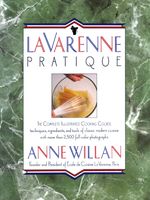Advertisement
Using Yeast
Appears in
By Anne Willan
Published 1989
Yeast is a living, single-celled organism. Scientists have identified over 400 species, but it is a specific strain that is used for making bread. Yeast leavens bread by transforming the natural sugars in the flour into tiny bubbles of carbon dioxide that become trapped in the dough. During baking, the bubbles expand to give bread its characteristic texture, lightness and taste. Yeast can only be effective in thick high-gluten doughs that are strong enough to hold in the bubbles. The way in which yeast reacts depends also on the temperature of the dough. The ideal level for fermentation is 85°F/30°C; low temperatures slow yeast activity, and at a temperature above 130°F/54°C, yeast is killed. Yeast is relatively more active in a large quantity of dough, so when doubling a recipe it is not always necessary to double the quantity of yeast.

